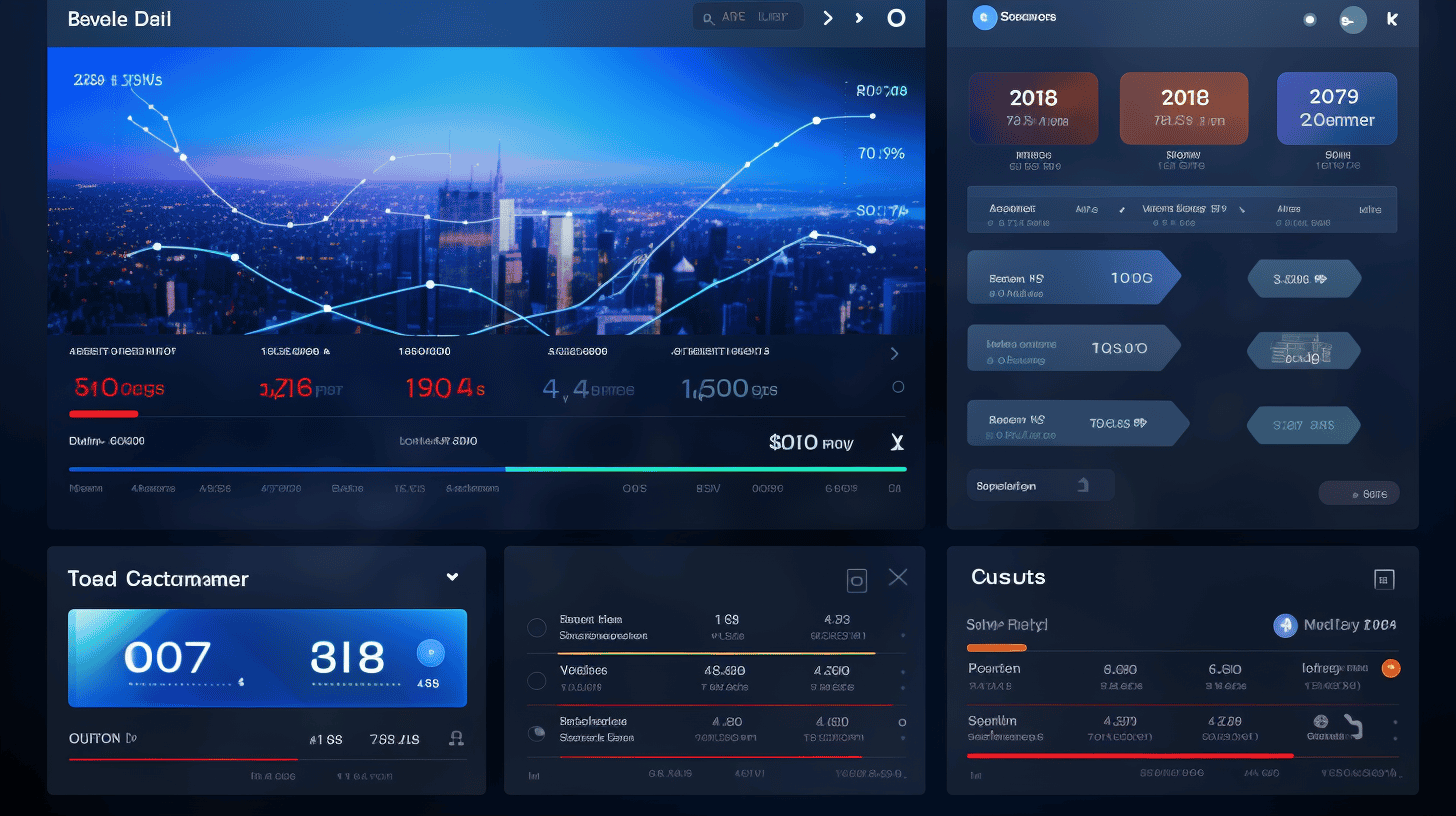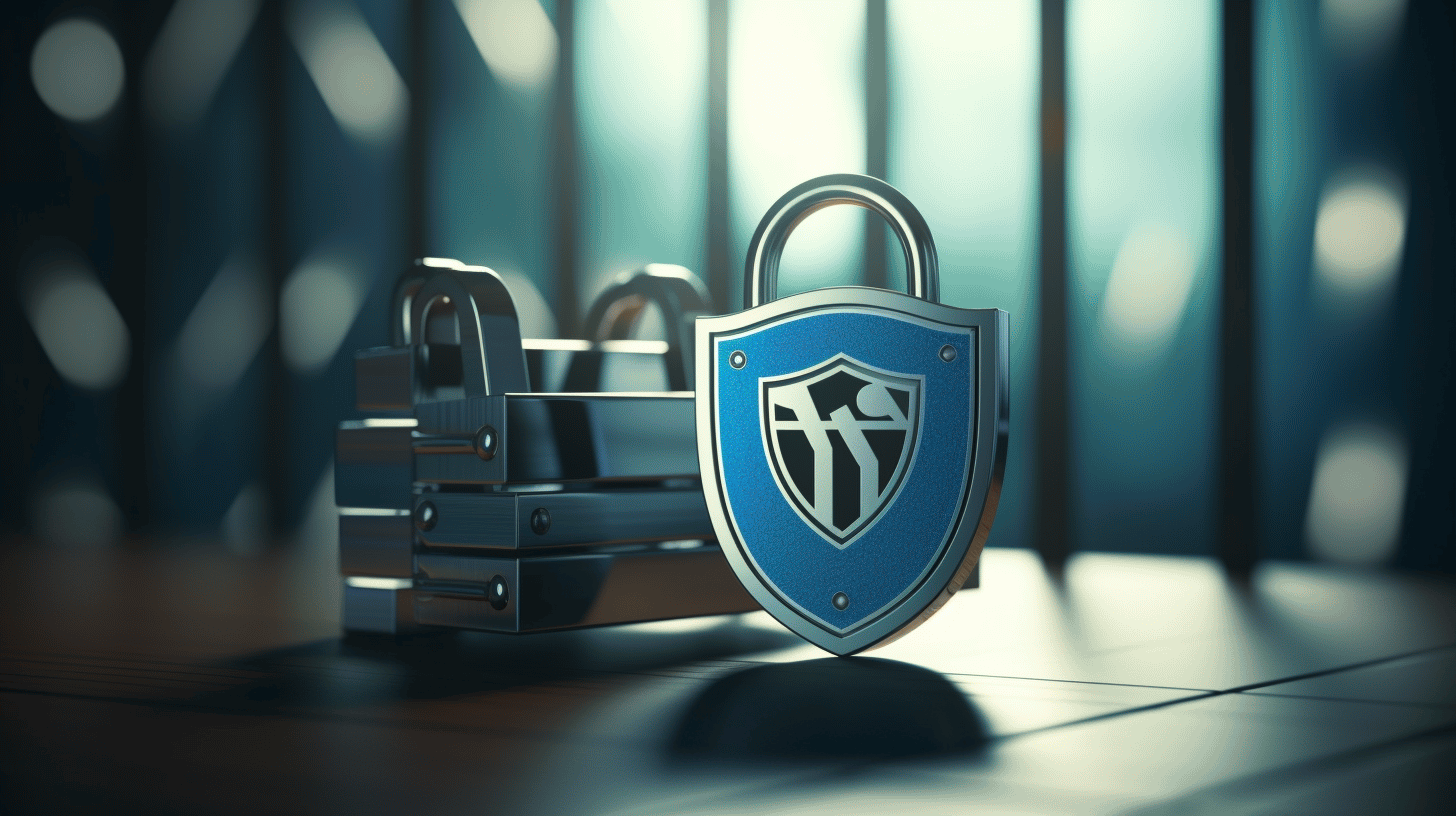欢迎阅读营销人员的网站管理和 WordPress 维护指南!在当今的数字时代,拥有一个维护良好且优化的网站对于企业在线发展至关重要。无论您是经验丰富的营销人员还是刚刚起步,本指南都将为您提供宝贵的见解,帮助您了解网站管理和实施有效的 WordPress 维护实践。
🌟 为什么网站管理很重要?
有效的网站管理不仅仅是拥有一个美观的网站。它涉及不断调整和优化您的网站,以满足受众不断变化的需求。一个管理良好的网站:
- 增强用户体验:通过遵循 ADA 访问指南、确保移动优化和简化导航,您可以为访问者创造无缝愉快的体验。
- 提高搜索引擎可见性:定期更新您的网站内容并实施 SEO 最佳实践可以提高您的搜索引擎排名,使潜在客户更容易找到您。
- 建立信誉和信任:具有统一的配色方案、引人注目的视觉元素和高质量内容的视觉吸引力强的网站可以帮助与受众建立信任并提高品牌的信誉。
- 推动参与度和转化率:通过创建有价值、相关且可共享的内容,您可以吸引受众、建立品牌忠诚度并最终推动转化。
💡 为什么您应该关心 WordPress 维护?
WordPress 是一种流行的内容管理系统 (CMS),为互联网的很大一部分提供支持。它提供灵活性、易用性和大量插件和主题来定制您的网站。但是,与任何其他软件一样,WordPress 需要定期维护以确保最佳性能和安全性。WordPress 维护至关重要的一些关键原因包括:
- 安全性:定期更新 WordPress 核心、主题和插件对于保护您的网站免受漏洞和安全漏洞的侵害至关重要。
- 稳定性:更新还解决错误、改进功能并优化性能,从而带来稳定可靠的网站。
- 备份:定期备份您的 WordPress 网站,确保在出现数据丢失或网站问题时有一个还原点。
- 兼容性:保持插件和主题更新可确保与最新版本的 WordPress 兼容,从而防止冲突和潜在故障。
现在我们已经确定了网站管理和 WordPress 维护的重要性,让我们深入研究每个主题,以帮助您优化网站以获得成功!🚀
了解网站管理
在当今的数字时代,拥有在线形象对于各种规模的企业都至关重要。一个管理良好的网站不仅可以作为虚拟店面,而且在吸引和吸引潜在客户方面也发挥着重要作用。从确保符合 ADA 到定期维护网站的性能,各个方面都有助于有效的网站管理。在本文中,我们将探讨一些有助于成功管理网站的关键因素,以及如何实施这些因素以增强整体用户体验。
使您的网站符合 ADA 访问指南
《美国残疾人法案》(ADA)旨在确保残障人士平等获得商品和服务。这包括网站和移动应用程序等在线平台。遵守 ADA 访问指南不仅可以为所有用户提供包容性体验,还有助于避免法律后果。在根据 ADA 指南调整您的网站时,需要牢记的一些关键注意事项包括:
- 为图像提供替代文本:这可确保视障用户可以通过屏幕阅读器技术了解图像的内容。
- 为视频添加隐藏式字幕:通过添加隐藏式字幕,有听力障碍的用户可以理解音频内容。
- 结合键盘导航:提供键盘友好的导航,使依赖键盘输入的用户能够轻松浏览网站。
确保您的网站符合 ADA 标准,表明您致力于包容性和可访问性,让所有用户都能无缝访问您的内容。
定期网站维护的重要性
就像任何其他资产一样,网站需要定期维护以确保其最佳运行。忽视网站维护可能会导致各种问题,例如安全漏洞、过时的插件和断开的链接。定期的网站维护可以帮助解决这些问题并保持您的网站顺利运行。以下是定期网站维护必不可少的一些原因:
- 安全性:定期更新和修补有助于保护您的网站免受潜在的安全威胁和漏洞。
- 性能优化:优化网站速度和性能可改善用户体验并提高搜索引擎排名。
- 内容管理:定期更新和刷新您的网站内容,以保持其与访问者的相关性和吸引力。
通过投入时间和精力进行定期网站维护,您可以确保您的网站保持安全、运行良好并继续有效地吸引用户。
视觉元素和配色方案在用户体验中的作用
对于网站而言,视觉效果在吸引用户注意力和传达品牌形象方面起着至关重要的作用。所使用的配色方案和整体视觉元素会极大地影响用户体验。以下是一些需要考虑的关键点:
- 色彩心理学:不同的颜色会唤起不同的情感,并具有不同的文化联想。选择符合您的品牌价值并能引起目标受众共鸣的配色方案。
- 一致的品牌:确保您的网站的视觉元素(例如徽标、字体和图像)与您的整体品牌形象保持一致。这有助于在用户中建立信任和认可。
- 用户友好型设计:具有清晰直观设计的视觉吸引力强的网站可提升整体用户体验。请考虑诸如易读的字体、井然有序的布局和具有视觉吸引力的图像等因素。
通过将视觉上令人愉悦的元素和配色方案融入您的网站设计,您可以创建与您的品牌信息相符的令人难忘且引人入胜的用户体验。
移动优化和简化导航的重要性
在大多数互联网用户通过移动设备浏览的时代,优化网站以实现移动响应至关重要。移动友好型网站不仅可以确保无缝的用户体验,还可以提高搜索引擎排名。以下是移动优化的一些关键注意事项:
- 响应式设计:实施响应式设计,自动适应各种屏幕尺寸,确保您的网站在各个设备上都能正常显示和运行。
- 清晰的导航:为移动用户简化网站的导航菜单,使他们能够轻松快速地找到所需的信息。
- 快速加载页面:优化网站性能,确保在移动设备上快速加载。加载缓慢的页面会导致用户失望并增加跳出率。
通过优先考虑移动优化和简化导航,您可以为通过智能手机或平板电脑访问您网站的访问者提供卓越的用户体验。
总之,有效的网站管理涉及多个方面,包括 ADA 合规性、定期维护、视觉元素和移动优化。实施这些策略不仅可以增强用户体验,还可以提高搜索引擎排名和整体业务成功。通过关注用户需求并随时了解最佳实践,您可以确保您的网站仍然是您企业的宝贵资产。有关有效 WordPress 网站管理的更多提示,请查看 有效的 WordPress 网站管理.
创建和更新网站内容
在我们生活的快节奏数字世界中,创建和更新网站内容对于保持相关性和吸引受众至关重要。您的网站通常是用户对您业务的第一印象,因此让它发挥作用至关重要。但是,创建有价值、相关且可共享的内容需要什么?为什么定期更新内容如此重要?让我们深入了解一下!
构建有价值、相关且可共享的内容
在创建网站内容时,质量是关键。您希望您的内容能够为读者提供价值并满足他们的需求和兴趣。以下是一些帮助您创建有价值、相关且可共享的内容的提示:
- 了解你的目标受众: 了解您的目标受众是谁以及他们正在寻找什么。进行市场调查,分析您的网站分析,并通过调查或社交媒体与您的受众互动,以收集有价值的见解。
- 确定相关主题: 随时了解行业趋势和与您的利基相关的热门话题。使用 Google Trends、Buzzsumo 或社交媒体平台等工具来识别能引起受众共鸣的热门和相关主题。
- 制作引人注目的标题: 标题是用户看到的第一件事,因此要让它发挥作用!创建引人注目的标题,吸引读者的注意力并吸引他们点击并阅读您的内容。
- 创建有价值的内容: 选定相关主题后,提供有价值的信息非常重要。提供见解、提示、教程或解决方案,帮助受众解决问题。力求内容信息丰富、具有教育意义且可操作。
- 使其具有视觉吸引力: 使用图片、视频或信息图等视觉效果来增强内容并使其更具吸引力。视觉效果不仅能吸引注意力,还能帮助以更易于理解的方式解释复杂的想法或数据。
- 针对搜索引擎进行优化: 在您的内容中自然地加入相关关键词,以提高搜索引擎的可见性。重点关注竞争较低但用户意图较高的长尾关键词。
- 鼓励社交分享: 通过添加社交分享按钮或提示,让读者可以轻松地在社交媒体平台上分享您的内容。通过要求受众分享与内容相关的想法或经验来吸引他们。
请记住,目标是创建引起受众共鸣的内容,鼓励参与和分享,并最终为您的网站带来流量。
定期更新内容
虽然创建有价值的内容很重要,但定期更新和刷新现有内容也同样重要。原因如下:
- 提高搜索引擎排名: 像 Google 这样的搜索引擎会优先考虑新鲜和最新的内容。通过定期更新网站内容,您可以向搜索引擎表明您的网站活跃且相关,这会对您的搜索引擎排名产生积极影响。
- 提供准确的信息: 行业在不断发展,信息很快就会过时。通过更新内容,您可以确保受众获得最准确、最相关、最可靠的信息。
- 提高用户参与度: 回访您网站的访客会喜欢看到新内容和更新内容。这表明您的企业积极主动并致力于提供新的见解和解决方案,这可以鼓励他们在您的网站上花更多时间并与您的品牌互动。
- 保持领先于竞争对手: 定期更新内容可以为您带来竞争优势。通过提供最新信息和见解,您可以将自己定位为行业内值得信赖的权威来源。
请记住,网站内容不是静态的。它应该随着您的业务和行业而发展。保持主动性,关注趋势和更新,并投入时间和精力来创建和更新能引起受众共鸣的内容。
为您的网站选择合适的 CMS
在构建网站时,选择正确的内容管理系统 (CMS) 至关重要。面对众多选项,您可能很难决定哪一个最适合您的需求。虽然需要考虑多个因素,但不应忽视的一个方面是 CMS 的安全功能。
CMS 的安全功能
在当今的数字环境中,在线安全比以往任何时候都更加重要。选择优先考虑安全性的 CMS 来保护您的网站免受潜在威胁至关重要。以下是一些需要注意的关键安全功能:
- 安全用户身份验证:强大的 CMS 应该提供多种身份验证选项,例如双因素身份验证或密码加密,以确保只有授权用户才能访问后端。
- 基于角色的访问控制:此功能允许您为不同用户定义特定角色和权限。例如,您可以授予内容创建者完全编辑权限,同时限制其他用户访问敏感区域。
- 定期安全更新:可靠的 CMS 提供商会定期发布安全更新和补丁,以解决可能出现的任何漏洞。这有助于保护您的网站免受最新威胁。
- 防范恶意软件:寻找包含内置功能以检测和防止恶意软件攻击的 CMS。实时扫描和自动删除恶意代码等功能可以帮助保护您的网站及其访问者。
- 安全文件上传:如果您的网站允许文件上传,请确保 CMS 已采取措施防止上传恶意文件。文件类型限制和病毒扫描等功能可以帮助降低此风险。
通过选择具有强大安全功能的 CMS,您可以放心,您的网站受到良好的保护,不会受到潜在安全漏洞的侵害。
CMS 定期更新
选择 CMS 时要考虑的另一个关键因素是其更新频率。定期更新至关重要,原因如下:
- 安全:如前所述,定期更新有助于修复 CMS 中可能存在的任何漏洞或错误,从而确保您的网站安全。黑客的策略不断演变,CMS 提供商必须保持警惕,及时发布更新以应对新出现的威胁。
- 表现:更新通常包括性能增强,可以提高您网站的速度和效率。这反过来又会带来更好的用户体验,并对您的搜索引擎排名产生积极影响。
- 兼容性:CMS 更新可确保您的网站与最新版本的 Web 浏览器和其他软件保持兼容。通过保持最新状态,您可以为使用不同设备或浏览器版本的访问者提供无缝体验。
选择具有定期更新记录和积极支持和维护平台的专门开发团队的 CMS 至关重要。
CMS 与最新版本的兼容性
最后,在选择 CMS 时,必须考虑其与不同技术的最新版本的兼容性。这包括与以下技术的兼容性:
- Web 浏览器:您的 CMS 应该与流行的网络浏览器(如 Google Chrome、Mozilla Firefox、Safari 和 Microsoft Edge)兼容,以确保您的网站能够正常为所有用户提供服务。
- 编程语言:检查 CMS 是否支持最新版本的编程语言,例如 PHP 或 Python。这可确保您的网站能够利用最新的功能和性能改进。
- 数据库管理系统:如果您的网站需要数据库,请确保 CMS 与最新版本的数据库管理系统(如 MySQL、PostgreSQL 或 MongoDB)兼容。
通过选择与最新技术兼容的 CMS,您可以为您的网站提供面向未来性,并确保其在不断变化的数字环境中长久耐用。
总之,在为您的网站选择 CMS 时,不要忽视安全功能、定期更新以及与最新版本技术的兼容性的重要性。通过考虑这些因素,您可以做出明智的决定,选择一个能够支持您网站的发展和安全需求的 CMS。
关键网站设计原则
在设计网站时,需要牢记几个关键原则。这些原则可确保您的网站不仅具有视觉吸引力,而且用户友好且易于访问。在本节中,我们将探讨一些最重要的设计原则,这些原则可帮助提升您网站的整体用户体验。
以用户为中心的设计原则
网页设计的基本原则之一是将用户置于设计过程的中心。这意味着了解你的目标受众,并创建一个满足他们需求和偏好的网站。以下是一些以用户为中心的设计原则:
- 直观的导航:确保您的网站导航直观且易于使用。用户应该能够快速轻松地找到所需的信息。
- 层次清晰:使用标题、副标题和项目符号等视觉提示来引导用户浏览内容。这有助于他们了解信息的组织结构并找到所需内容。
- 一致性:在整个网站中保持一致的设计。这包括在不同的页面上使用一致的字体、颜色和布局。一致性有助于打造具有凝聚力和专业外观的网站。
针对移动设备和可访问性进行设计
随着智能手机和平板电脑的日益普及,设计网站时必须考虑到移动设备。移动响应式设计可确保您的网站在较小的屏幕上显示和运行良好。此外,可访问性对于确保残障人士能够有效访问和浏览您的网站至关重要。以下是设计适合移动设备且可访问性强的网站的一些技巧:
- 响应式设计:使用响应式设计技术确保您的网站适应不同的屏幕尺寸和分辨率。这有助于为所有设备上的用户提供无缝的浏览体验。
- 图像的替代文本:为图像添加描述性替代文本,以帮助依赖屏幕阅读器理解内容的视障用户。
- 键盘导航:确保您的网站可以使用键盘轻松导航,因为某些用户可能行动不便,需要依赖键盘导航。
有效利用视觉层次
视觉层次结构是指网页上元素的排列和优先级。通过有效利用视觉层次结构,您可以引导用户的注意力并强调重要内容。以下是实现有效视觉层次结构的一些技巧:
- 尺寸和位置:使用更大、更醒目的元素来吸引人们注意重要信息。将关键元素(如号召性用语按钮)放在首屏上方以提高可见度。
- 对比:使用对比色和字体大小来创建不同元素之间的视觉对比。这有助于突出重要内容。
- 空格:策略性地使用空白来创造视觉喘息空间并分隔不同部分。空白有助于提高可读性并使内容看起来更简洁。
字体和颜色对比
选择正确的字体和颜色对于创建具有视觉吸引力的网站至关重要。字体有助于内容的整体色调和可读性,而颜色对比度可确保文本易于阅读。以下是使用字体和颜色对比度的一些技巧:
- 字体选择:选择易于在屏幕上阅读的字体,例如 Arial 或 Helvetica 等无衬线字体。避免使用太多不同的字体,因为这会使网站显得杂乱。
- 颜色对比:确保文本和背景颜色之间有足够的对比度。颜色对比度低会使有视力障碍的用户难以阅读内容。使用在线工具检查颜色组合的对比度。
请记住,应用这些关键的网站设计原则可以显著提升网站的用户体验。通过优先考虑用户需求、针对移动设备和可访问性进行设计、有效利用视觉层次结构以及使用字体和颜色对比,您可以创建一个不仅外观精美,而且还能为用户提供无缝且引人入胜的体验的网站。
WordPress 维护以优化性能
在当今的数字时代,拥有一个维护良好且性能卓越的网站对于企业和个人都至关重要。谈到网站管理,WordPress 无疑是最受欢迎的选择之一。但仅仅建立一个 WordPress 网站是不够的;定期维护对于确保最佳性能和安全性至关重要。在本文中,我们将探讨一些基本的 WordPress 维护实践,这些实践可以帮助您保持网站顺畅高效地运行。
WordPress 核心、主题和插件的定期更新
WordPress 是一个开源平台,这意味着它在不断发展和改进。核心软件、主题和插件都会定期更新,以修复错误、增强安全性并引入新功能。务必随时了解这些更新,以确保您的网站保持安全并符合最新标准。
以下是有关更新需要记住的一些要点:
- 保持 WordPress 核心更新至最新版本。这将为您提供最新的安全补丁和改进。
- 定期更新您的 WordPress 主题和插件。开发人员经常发布更新来修复错误并保持与最新版本 WordPress 的兼容性。
- 更新之前,请务必备份您的网站以避免任何潜在问题。
- 使用可靠的更新管理工具来简化流程并保持井然有序。
轻松的 WordPress 备份
备份您的 WordPress 网站就像购买保险一样。它可以保护您的网站及其内容免受服务器崩溃、黑客攻击或意外数据丢失等不可预见的情况的影响。定期备份可确保您在发生任何意外事件时将网站恢复到以前的工作状态,最终为您节省时间、金钱和麻烦。
以下是一些轻松进行 WordPress 备份的技巧:
- 定期设置自动备份。这将确保您的数据始终是最新的,并在需要时随时可用。
- 使用提供增量备份、轻松恢复和远程存储选项等功能的可信备份插件。
- 将备份存储在安全的位置(最好是异地),以确保冗余并防止数据丢失。
维护模式的有效使用
有时,您可能需要在不影响用户体验的情况下对网站执行某些维护任务。这就是维护模式发挥作用的地方。它允许您将网站置于临时离线状态,显示自定义消息或登录页面以通知访问者有关维护工作的信息。
以下是有效使用维护模式的一些要点:
- 执行更新、进行重大设计更改或执行任何其他后端操作时启用维护模式。
- 定制您的维护页面以反映您的品牌并向您的访问者提供相关信息。
- 利用提供高级功能的插件,如倒计时器、电子邮件捕获表单或社交媒体集成,以便在维护期间保持观众的参与度。
更新自动化工具
手动跟进 WordPress 更新、主题更新和插件更新可能是一项耗时的任务,尤其是在您管理多个网站的情况下。自动化工具可以大大简化此过程,并确保您的网站始终保持最新状态,而无需任何手动干预。
以下是一些流行的 WordPress 维护自动化工具:
- ManageWP——一个全面的管理仪表板,可让您从单一位置更新多个 WordPress 网站。
- InfiniteWP – 与 ManageWP 类似,它允许您轻松管理和更新多个网站。
- MainWP——一个强大的插件,可以将您的网站变成管理仪表板,提供轻松更新等功能。
检查并确保插件兼容性
插件是 WordPress 生态系统不可或缺的一部分,可以扩展功能并为您的网站添加新功能。但是,并非所有插件都是一样的,当同时使用多个插件时可能会出现兼容性问题。确保您安装的插件与您的 WordPress 版本兼容以及彼此兼容至关重要。
以下是检查和确保插件兼容性的一些提示:
- 定期更新您的插件以获得最新的兼容性修复和改进。
- 阅读插件评论并检查开发人员的更新历史以评估他们对兼容性和持续支持的承诺。
- 在将新插件安装到您的实时网站上之前,请先在暂存环境中对其进行测试,以尽量减少潜在冲突。
如您所见,WordPress 维护在优化网站的性能和安全性方面发挥着重要作用。通过遵循这些最佳实践,您可以确保您的 WordPress 网站保持最新、备份并与最新更新兼容。请记住,维护良好的网站是可靠且用户友好的网站。因此,花一点时间进行定期维护,从长远来看,您将获得回报。
有关 WordPress 管理和维护的更多信息,请查看 WordPress 管理.
WordPress 维护的最佳实践
投资 WordPress 维护服务
在管理 WordPress 网站时,投资专业维护服务可以带来很大的不同。无论您是小企业主还是经验丰富的网站开发人员,拥有一支专门的团队来负责 WordPress 网站的持续维护可以确保其顺利运行和最佳性能。
托管 WordPress 解决方案,例如 托管 WordPress 解决方案,提供全面的维护服务,涵盖各种基本任务。这些服务通常包括定期更新、备份、安全检查和错误管理。通过将这些任务外包给专家,您可以专注于核心业务活动,同时确保您的网站保持安全和最新状态。
持续更新和备份
定期更新对于保持 WordPress 网站顺利运行至关重要。更新不仅会引入新功能和改进,还会解决安全漏洞和错误。务必随时了解这些更新,以确保最佳用户体验并保护您的网站免受潜在威胁。
除了更新之外,定期备份也同样重要。如果您的网站出现问题,它们可以作为安全网。通过最近的备份,您可以在发生数据丢失或其他问题时快速将网站恢复到以前的状态。建议定期安排自动备份并将其安全地存储在异地,以增加您的安心。
安全检查和数据库优化
网站安全应该是任何 WordPress 网站所有者的首要任务。定期的安全检查有助于识别和修复黑客可能利用的漏洞。这些检查包括扫描恶意软件、监控登录尝试以及实施强大的安全措施(例如双因素身份验证)。确保网站的安全环境不仅可以保护您的敏感数据,还可以维护您在受众中的声誉和信任。
除了安全性之外,优化数据库是 WordPress 维护的另一个重要方面。随着时间的推移,数据库可能会充斥着不必要的数据,从而降低网站的性能。定期进行数据库优化有助于删除冗余数据并简化数据库结构,从而缩短页面加载时间并提高网站的整体性能。
错误管理和故障排除
没有哪个网站能够避免偶尔出现错误或技术问题。然而,关键在于及时有效的错误管理和故障排除。专业的维护服务提供商拥有专业知识,可以快速识别和解决可能出现的任何问题,最大限度地减少停机时间并确保无缝的用户体验。
有效的错误管理包括监控和解决断开的链接、解决插件冲突以及解决任何兼容性问题。通过主动处理这些错误,您可以为访问者提供流畅的浏览体验,并防止对您的业务造成潜在的昂贵影响。
定义 WordPress 维护计划的好处
制定明确的 WordPress 维护计划可为网站所有者和开发人员带来诸多好处。一些主要优势包括:
- 改进网站性能: 更新、备份和优化等定期维护任务有助于网站更快、更高效。
- 增强的安全性: 通过监控和更新安全措施,您可以保护您的网站免受潜在威胁并维护您的在线声誉。
- 减少停机时间: 及时的错误管理和故障排除可最大限度地减少对您网站可用性的干扰,确保无缝的用户体验。
- 安心: 有了可靠的维护服务提供商来处理您网站的技术问题,您就可以专注于发展业务和实现目标。
请记住,投资专业的 WordPress 维护服务是对您网站长期成功和性能的投资。通过与托管 WordPress 解决方案等值得信赖的提供商合作,您可以确保您的网站保持安全、最新且以最佳状态运行。
结论
总之,网站管理和 WordPress 维护领域广阔且不断发展。从适应 ADA 访问指南到优先考虑移动优化和简化导航,有许多因素需要考虑以确保成功的在线形象。
创建有价值且可共享的内容、定期更新网站以及选择正确的 CMS 是维护专业且用户友好的网站的关键步骤。此外,采用以用户为中心的设计原则、通过定期更新和备份优化网站性能以及投资可靠的维护服务是为您的受众提供无缝数字体验的关键。
虽然网站管理可能很复杂,但有资源和服务可以简化这一过程。 托管-WP™是一个高级管理型 WordPress 云托管平台,致力于简化基础设施,提供全天候专家支持,并提供主动监控以优化您的 WordPress 网站的性能。
通过利用正确的工具、策略和支持,您可以确保您的网站保持安全、最新和视觉吸引力。拥抱网站管理和 WordPress 维护的世界,充分发挥您的在线潜力。
托管-WP™ – 使用 Managed-WP™ 简化您的 WordPress 维护和托管体验。
常见问题
- 为什么网站管理和 WordPress 维护对营销人员很重要?
网站管理和 WordPress 维护对于营销人员来说至关重要,以确保他们的网站运行顺畅、保持安全并提供积极的用户体验。定期更新和维护有助于优化网站性能、提高 SEO 排名并防范安全威胁。
- 网站管理和 WordPress 维护包含哪些基本任务?
网站管理和 WordPress 维护中的一些基本任务包括定期备份、软件更新、安全监控、优化网站速度、修复断开的链接、监控分析和管理内容更新。
- 我应该多久执行一次网站维护任务?
网站维护任务的频率可能因您网站的大小和具体需求而异。但建议每月至少执行一次软件更新、备份和安全检查,并定期监控和更新内容。
- 我可以自己处理网站管理和 WordPress 维护吗,还是应该聘请专业人员?
如果您有知识和时间,您绝对可以自己处理网站管理和 WordPress 维护。但是,聘请专业人员或将这些任务外包给可靠的机构可以节省时间,确保专业处理技术问题,并让您高枕无忧。
- 忽视网站管理和 WordPress 维护会带来什么后果?
忽视网站管理和 WordPress 维护会导致各种问题,例如安全漏洞、网站性能缓慢、插件和主题过时、搜索引擎排名下降、链接断开以及用户体验不佳。它还会使您的网站更容易受到黑客和恶意软件的攻击。



















